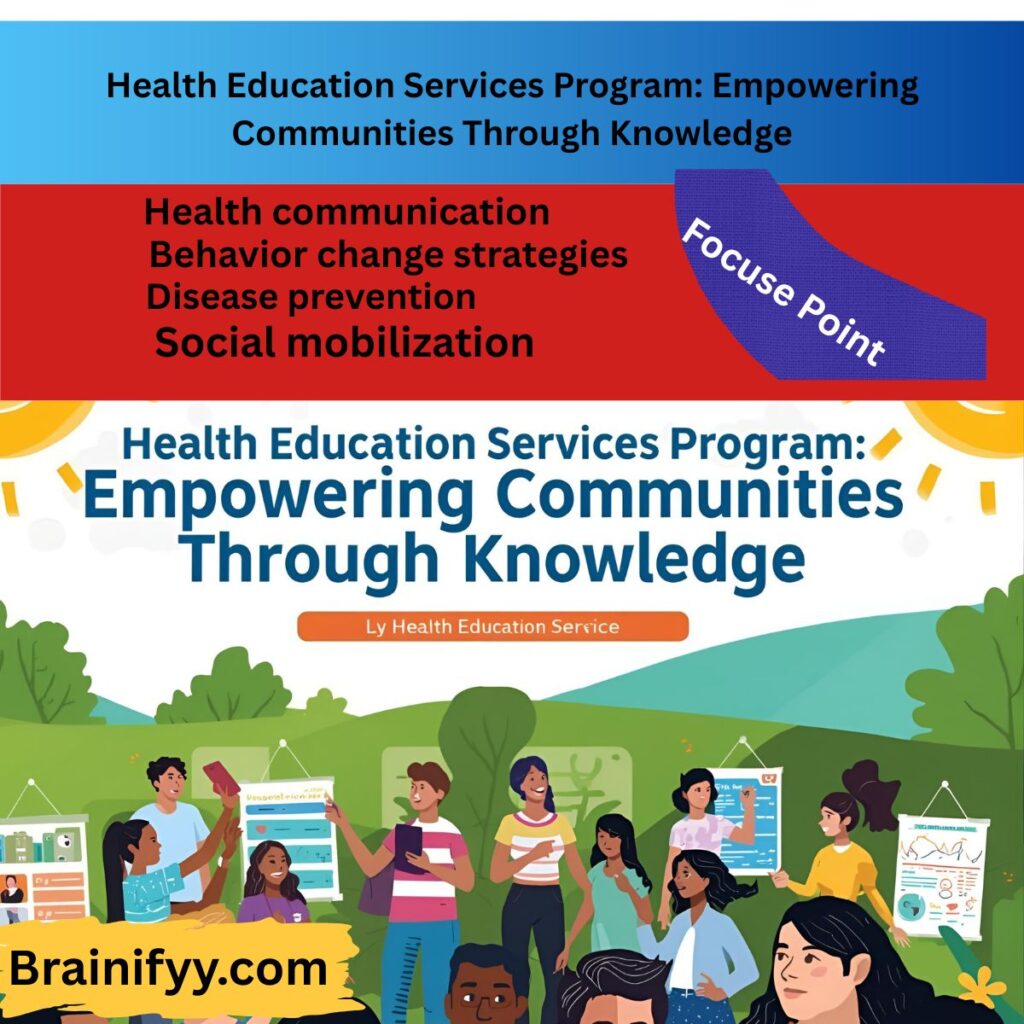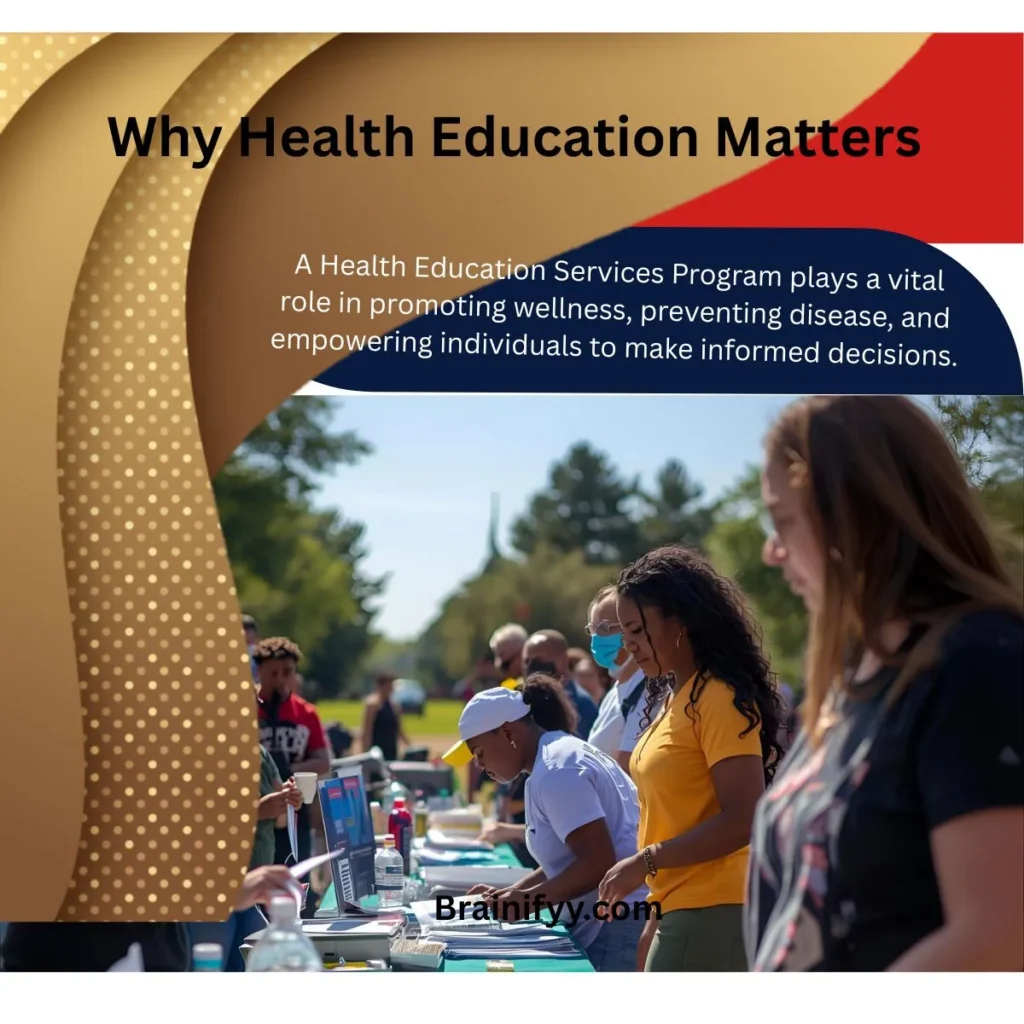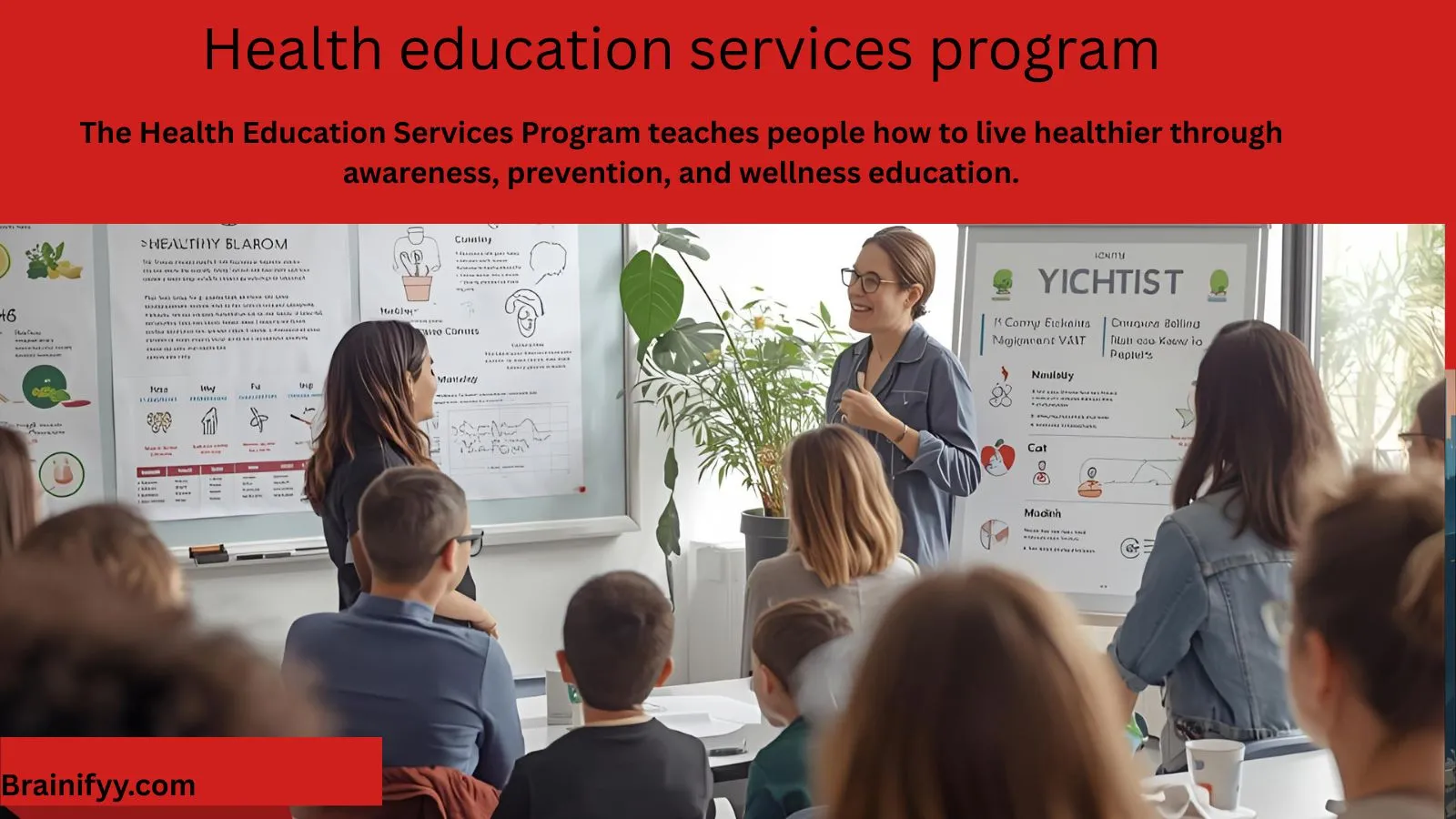A Health Education Services Program helps people learn how to live healthier, prevent diseases, and improve their quality of life. Today, many individuals search for this keyword because they want to understand what such programs offer and how they differ from general health courses. People are often confused about whether it’s a government service, a school course, or a community program.
In simple terms, a Health Education Services Program is designed to teach individuals and groups about health topics—nutrition, hygiene, mental health, and disease prevention. It helps both students and professionals understand health behaviors and public health strategies. Whether you’re looking for a degree, a training service, or community outreach information, this article explains everything clearly and simply.
Health Education Services Program: Empowering Communities Through Knowledge

The Health Education Services Program empowers communities by spreading vital health knowledge and promoting preventive care.
Moreover, it bridges the gap between awareness and action through education, workshops, and outreach. Ultimately, by teaching healthy habits, it builds stronger, informed, and healthier societies.
Why Health Education Matters

In today’s fast-paced world, access to accurate health information is essential. A Health Education Services Program plays a vital role in promoting wellness, preventing disease, and empowering individuals to make informed decisions. Whether implemented by governments, NGOs, or academic institutions, these programs are designed to improve public health outcomes through education, advocacy, and behavior change.
What Is a Health Education Services Program?
A Health Education Services Program is a structured initiative that delivers health-related knowledge and skills to individuals and communities. It focuses on:
- Health communication
- Behavior change strategies
- Disease prevention
- Social mobilization
- Community engagement
In Pakistan, for example, the Directorate General Health Services Punjab runs a dedicated Health Education Section that supports communication planning, monitoring, and impact evaluation
Health Education Services Program – Quick Answer
A Health Education Services Program is a structured plan that teaches people how to make better health decisions. Specifically, it can include school courses, university degrees, hospital workshops, or community awareness campaigns.
Example:
- Schools offer health classes on nutrition and fitness.
- Meanwhile, hospitals run smoking cessation programs
- In addition, NGOs teach hygiene and sanitation in rural areas.
In short, it’s a program that educates, motivates, and supports people to lead healthier lives.
The Origin of Health Education Services Program
The concept of health education dates back to the early 20th century, when public health campaigns began spreading awareness about hygiene and disease prevention. The term “Health Education Services Program” emerged later as institutions formalized these efforts into structured programs.
Originally, the focus was on controlling infectious diseases like cholera and tuberculosis. Over time, it expanded to include nutrition, mental health, substance abuse, and lifestyle choices. Today, it combines both medical knowledge and social education to improve overall community health.
British English vs American English Spelling
Although both British and American English use the same phrase “Health Education Services Program,” there’s a small variation in one word:
- American English: “Program”
- British English: “Programme”
This difference comes from historical spelling preferences. Americans simplified certain spellings for easier use, while British English kept traditional French and Latin influences.
| Region | Spelling | Example Usage |
|---|---|---|
| United States | Health Education Services Program | “The university launched a new Health Education Services Program.” |
| United Kingdom | Health Education Services Programme | “The NHS offers a national Health Education Services Programme.” |
Both are correct, but which one you use depends on your audience.
Which Spelling Should You Use?
If your readers are from the United States or Canada, use “Program.”
If they’re from the UK, India, Australia, or other Commonwealth nations, use “Programme.”
For global audiences, “Program” is now more widely accepted online because it’s shorter and more common in digital content. So, when in doubt, choose “Program.”
Common Mistakes with Health Education Services Program
Here are some frequent errors people make:
| Mistake | Correction |
|---|---|
| Health Education Service Program | Health Education Services Program |
| Health Education Program Services | Health Education Services Program |
| Health Educational Services | Health Education Services Program |
| Health Service Education Program | Health Education Services Program |
Remember, the correct order is Health → Education → Services → Program.
Health Education Services Program in Everyday Examples
You can find this phrase used in various real-life contexts:
- Email: “Our department invites you to join the new Health Education Services Program this semester.”
- News: “The city council announced a Health Education Services Program to promote healthy eating.”
- Social Media: “Excited to start my internship in the Health Education Services Program!”
- Formal Writing: “The Health Education Services Program aims to reduce chronic disease rates through educations.”
These examples show how the term is used in both professional and casual communication.
Health Education Services Program – Google Trends & Usage Data
According to Google Trends, the term “Health Education Services Program” is most popular in the United States, India, and the United Kingdom. Interest peaks during the start of academic semesters and public health campaigns.
It’s often searched alongside related terms like:
- Health promotion programs
- Community health services
- Public health education
- School health programs
| Country | Search Interest (%) | Context |
|---|---|---|
| United States | 100% | Universities and public health services |
| India | 78% | Nursing and health courses |
| United Kingdom | 65% | NHS and community programs |
| Australia | 59% | School and wellness initiatives |
This shows how the term has global relevance, especially in academic and professional settings.
FAQs about Health Education Services Program
1. What is a Health Education Services Program?
It’s a structured program that teaches health awareness and prevention to individuals or communities.
2. Who offers Health Education Services Programs?
They are offered by schools, universities, hospitals, government agencies, and NGOs.
3. Is it part of public health?
Yes. It’s a branch of public health focused on education and behavior change.
4. What can you learn in such a program?
To begin with, topics include nutrition, hygiene, mental health, and chronic disease prevention.
5. Are online Health Education Services Programs available?
Absolutely. In fact, many universities and organizations now offer them online.
6. Is there a difference between “Program” and “Programme”?
Yes—though only in spelling. Specifically, “Program” is American English, while “Programme” is British English.
7. Why is this program important?
Above all, it builds awareness, reduces healthcare costs, and improves community well-being.
Conclusion
A Health Education Services Program is more than a course—it’s a mission to improve health literacy and community wellness. Whether used in schools, workplaces, or hospitals, it teaches practical skills for healthier living.
When writing or speaking, remember that “Program” is American and more widely accepted online, while “Programme” fits British audiences. Always spell it correctly and use it in the right context to sound professional and credible.
Ultimately, this term represents a bridge between education and healthcare, guiding people toward better lives through knowledge and awareness.


Leave a Reply